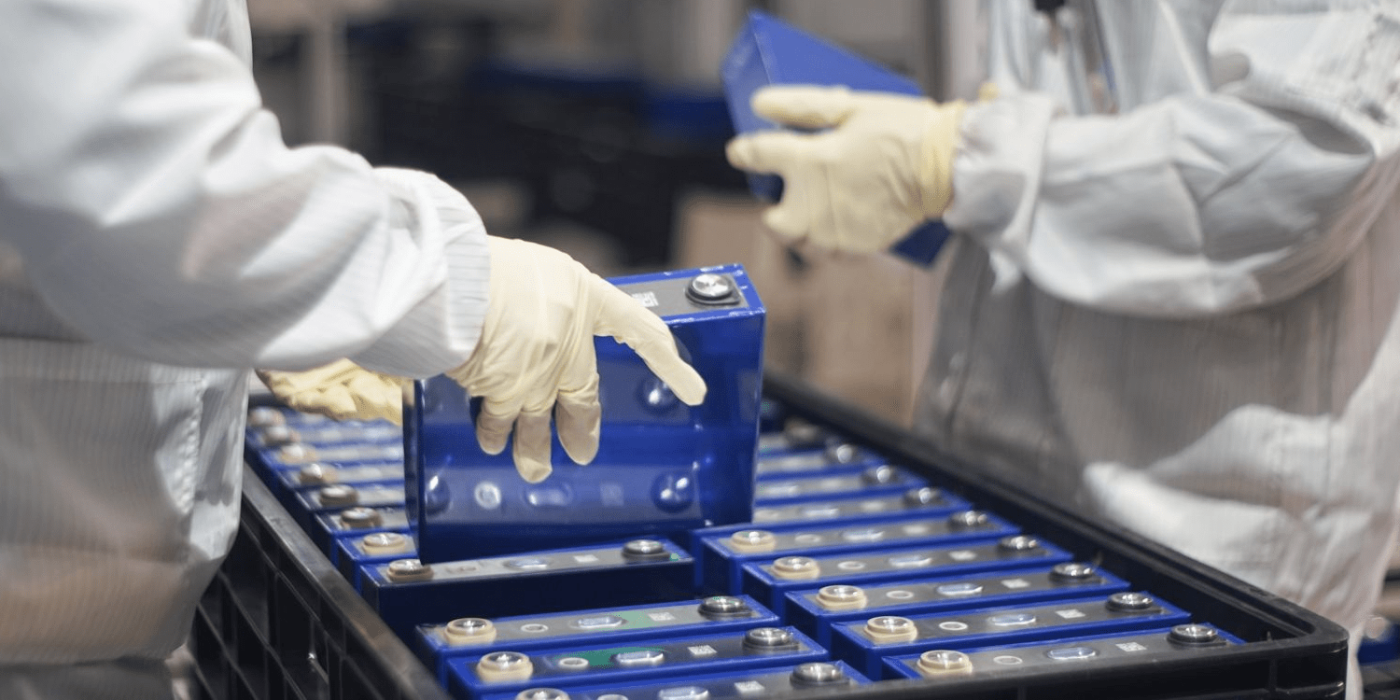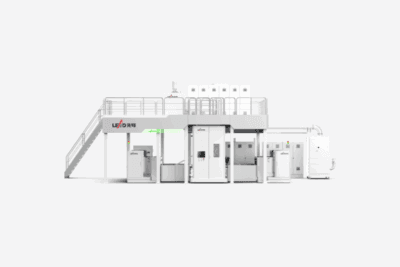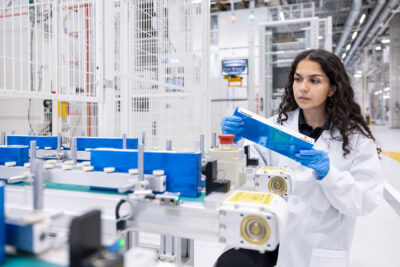On this side of miracles: the five most important battery trends
Range, charging power, and cost: the traction battery remains the most important component in the electric car. The progress is noticeable in the current models, but further improvements in the coming years are vital. What is already happening on the road and not just in the lab?
***
The battery revolution has yet to happen: Upon closer inspection, success stories from battery research are mostly just inflated partial results that are supposed to attract new funds for the respective institute. The number of miracle believers expecting a drastic innovation in cell chemistry is shrinking.
On the other hand, traction batteries’ properties in electric cars are continuously improving. Evolution instead of revolution – that is the reality of traction batteries. Most of the time, there is an increase in range, but the charging speed often goes up as well. Everything is heading in the right direction, yet some questions remain unanswered.
A battery system in which many individual cells form a working collective is supposed to be able to do everything: It should store a lot of electrical energy, preferably in a small space (volumetric energy density) and with little weight (gravimetric energy density). Safety must also be as high as possible in a crash and the risk of thermal runaway as low as possible. And especially in vehicle segments from the compact class downwards, cost is a key issue. It’s all about money – as always.
Our overview of the five most important trends:
1. LFP is expanding to LMFP
Tesla started the trend: the previously-named Model 3 Standard Range Plus lost the name suffix and was fitted with LFP cells. LFP stands for “Lithium iron phosphate,” cell chemistry that is robust in every respect. The cycle stability is high, and the dreaded thermal runaway is considered unlikely. Production is also unproblematic – and inexpensive because it does not require expensive or critical metals such as nickel and cobalt.
The disadvantage is the low energy density: A Model 3 with LFP cells has a standard range of 491 kilometres. On the other hand, a Model 3 Long Range Dual Motor with a predominantly nickel-based cathode mixture comes to 602 kilometres. Because of the extra price of 9,000 euros, however, many buyers are happy to go for the LFP version.
The combination of low-cost LFP cells for entry-level versions and classic NMC cells for premium variants can be found at many car manufacturers. Especially those directly associated with China, because LFP cells were first established there and are widely used.
How blatant the effects are can be shown by a simple comparison. A Volkswagen ID.3 with 58 kWh and 429 km WLTP range costs at least 39,995 euros in Germany. The standard equipment leaves something to be desired, and Volkswagen has failed to offer an ID.3 with less range for less money. The ID.3 with 45 kWh can only be found in small series in fleet operations such as car sharing. It is not for ‘normal’ customers.

With the EX30, Volvo shows what is missing at Volkswagen: the entry-level price is 36,590 euros. A price difference of more than 3,400 euros, which is even slightly higher when adjusted for equipment, can affect a buyer’s decision, especially in the C-segment. Admittedly, the EV only has a range of 340 km because of the LFP cells. However, given a final price of less than 30,000 euros for private individuals in Germany (after subsidies), some customers will likely go for it.
Tesla continues to lead the way. LFP will be upgraded to LMFP – probably by the end of this year. Incorporating manganese into the structure is demanding but increases energy density. For the electric car (first in the Model 3 Highland, then in the Model Y Uniper), that could mean up to 10 per cent more range, while costs remain stagnant.
The cells come from the world market leader CATL. The cell voltage of LMFP cells is higher than that of LFP cells. One weakness, however, is the lower charging and discharging performance. But it remains to be seen if that is even noticeable in everyday life and how big this performance loss really is. Our guess: Tesla will, as always, skilfully control the battery system. And other manufacturers will follow – including Volkswagen, if the announcements made at Power Day are to be believed.
2. Silicon admixture at the anode
The debate about the details of the cathode mixture – NCA or NMC955 – takes the focus off the great potential for improvement at the anode. Here, graphite is used almost exclusively. But graphite is very heavy and slows down the charging speed. Moreover, it is almost exclusively processed in China. If you manage to add more and more silicon to this graphite anode, the result will be a vastly improved energy density and a higher C-rate (=charge speed, see point 5).
 The Porsche Taycan and the Audi e-tron GT already have a silicon admixture in the low single-digit percentage range. Industry circles assume that up to 20 per cent is feasible medium term. The problem here is, that such anodes change volume during charging and discharging as they increase and shrink. Materials research is working on removing the resulting obstacles. There is general confidence that this will work.
The Porsche Taycan and the Audi e-tron GT already have a silicon admixture in the low single-digit percentage range. Industry circles assume that up to 20 per cent is feasible medium term. The problem here is, that such anodes change volume during charging and discharging as they increase and shrink. Materials research is working on removing the resulting obstacles. There is general confidence that this will work.
Battery cells with a graphite anode and silicon admixture can be produced on conventional production lines. Experts say they come close to solid-state batteries in terms of properties. In the second half of the decade, such battery cells will become increasingly widespread – and they are more realistic than solid-state batteries.
3. Solid-state batteries
Solid-state batteries are one of the biggest buzzwords in the industry. Replacing a liquid electrolyte has a radical advantage if a solid electrolyte can be successfully combined with an anode of pure metallic lithium. In terms of properties, both energy density and performance could be excellent.
But pure lithium is highly reactive, and, therefore, difficult to handle and produce. The question from the car industry’s perspective is whether investing a lot of effort here is financially worthwhile.
Very few suppliers are openly working on the combination of solid electrolyte and metallic lithium anode. Quantumscape is one of them. Volkswagen has a stake in Quantumscape.
 Many companies instead declare semi-solid-state batteries under the label “solid-state”. The terms are not strictly protected. Semi-solid-state electrolytes can be soft powders or gels. They have some potential to improve battery cell properties somewhat, for example, operational reliability, but they do not provide the prerequisite for an anode of pure lithium.
Many companies instead declare semi-solid-state batteries under the label “solid-state”. The terms are not strictly protected. Semi-solid-state electrolytes can be soft powders or gels. They have some potential to improve battery cell properties somewhat, for example, operational reliability, but they do not provide the prerequisite for an anode of pure lithium.
The toughest competitor of solid-state batteries are conventional cells with the admixture of silicon at the anode mentioned under point 2. Should someone nevertheless succeed in bringing a durable solid-state battery with a pure lithium anode and real solid electrolyte to series production readiness, that would be a breakthrough.
Unfortunately, this is not foreseeable at present.
4. Sodium instead of lithium
Many people are less interested in the upper end of what is technically conceivable, but more in the lower end of what is actually feasible: The main problems today are about money and affordability. And that is where battery cells that rely on sodium instead of lithium offer potential.
BYD from China will equip the Seagull microcar with sodium-ion cells as an option before the end of this year. The materials used in this chemistry are very different from what is common today. The basic mode of operation, however, is the same.
Using sodium instead of lithium is cheaper. So-called amorphous carbon (hard carbon) is used at the anode instead of graphite. Material developers apparently managed to mitigate important weaknesses, such as the loss of capacity during the first charge. Industry giants like CATL, which will also build sodium-ion batteries, would otherwise lose credibility.

For example, dyes such as Prussian White (CATL) can be used at the cathode. Prof. Dr. Markus Hölzle, materials specialist at the ZSW in Baden-Württemberg, estimates that a kilowatt-hour at system level costs around 80 euros. For comparison: according to Hölzle’s analysis, LFP cells come to 118 euros and NMC811 cells to 146 euros.
Because of their very low energy density, sodium-ion cells compete mainly with LFP cells. Here, sodium is even weaker than LFP. However, this is countered by major advantages that go beyond the costs. For example, sodium-ion cells have much better low-temperature properties, and their durability is even higher.
At present, the chances are still to be assessed cautiously. The criticism of the low energy density is strongly reminiscent of the early days of LFP cells: They were actually only suitable as buffer storage for solar energy in residential buildings, it was said about LFP cells. Until Tesla came along. Things could be similar with sodium-ion cells.
5. The C-rate is rising
The C-rate is the benchmark on every auto industry chart of battery development. 1C means that charging from 0 to 100 per cent takes one hour. Translated for ten to 80 per cent (which is what is most often quoted), 1C is thus 42 minutes.
The C rate is used to compare the charging speed of traction batteries with different energy contents. The maximum charging rate, on the other hand, is a single value that certainly allows conclusions to be drawn, but is not meaningful enough for practical use.
Most electric cars in the compact segment need around 30 minutes to charge from ten to 80 per cent. That corresponds to 1.4C. And Hyundai’s e-GMP does it in 18 minutes, reaching 2.3C. That is the peak of what customers can buy today at a low price.

By 2030, however, C-rates are expected to rise to 4 or 5. That’s how the car industry charts it. CATL is even faster. The Chinese world market leader recently introduced the Qilin system, which can be equipped with LFP and NMC cells. CATL claims ten (!) minutes for the charging stroke from ten to 80 per cent, which means 4C. Production is scheduled to start in 2023.
The technical means to achieve this is to drastically increase the cooling and heating power in the system. If the cells are doing well, they can perform at their optimum. Of course, CATL will also have to put up with this factory specification being tested later in the electric car. We are curious about the reality that is so promising on paper.
So a first-class battery system is an ideal complement to good cells. Sure. And 800 volts are another means. If a charging station offers a maximum of 500 amps and the electric car is designed for 400 volts, that’s just about it at 200 kW. An 800-volt system can theoretically do twice that – this is where the battery system and cell chemistry set the limit, which is currently around 270 to 300 kW in a production car.
The third way to increase the C-rate is to improve the anode, for example, by adding silicon to the previously pure graphite anode.
Some electric car owners suggest that it is not necessary to increase the C-rate further. That might be true for those who mainly charge at home. It is gentle to charge slowly. On the road, however, the opposite is needed. DC infrastructure will always reach its limits as electric mobility ramps up. We can already see that the sometimes yawningly empty DC parks are overcrowded on Sunday afternoons or at the start of the holidays.
A high C-rate means that the charging spaces are cleared more quickly. That is a step forward that cannot be avoided if electric mobility is to be scaled up.
Report by Christoph M. Schwarzer





1 Comment